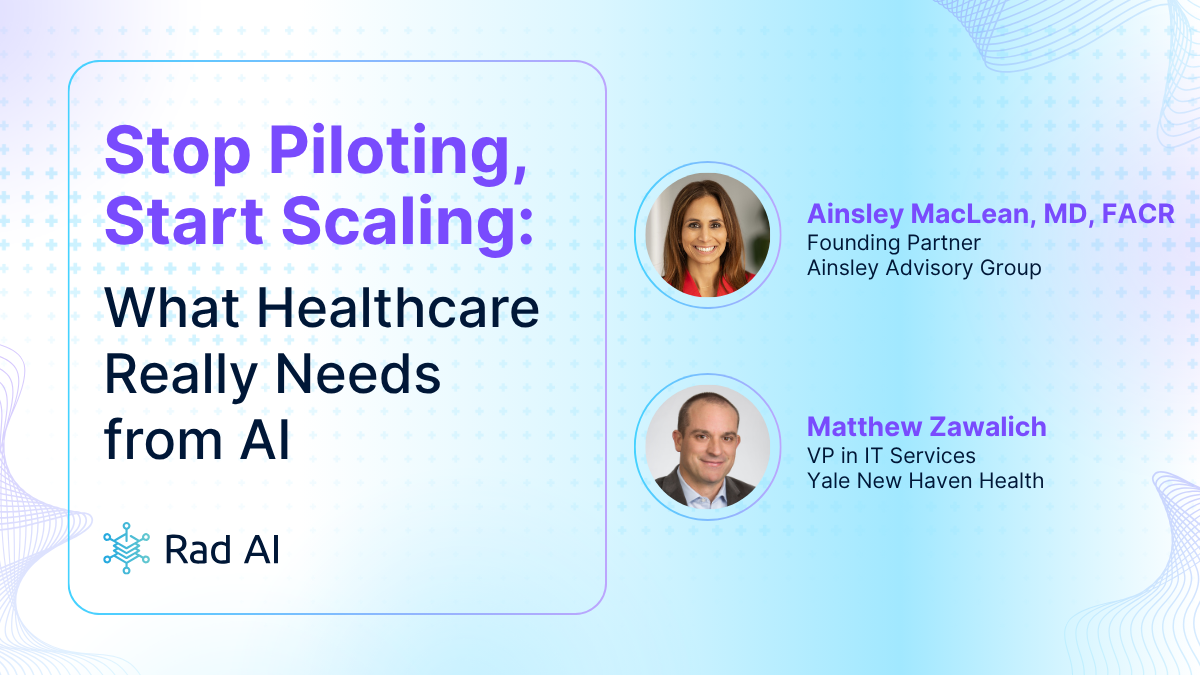Why Transparency Is Redefining Trust in Healthcare AI


Healthcare leaders aren’t just evaluating AI technology; they’re evaluating the people and principles behind it. They expect more than promises on effectiveness – they need clear visibility into:
- How AI systems are built and tested for accuracy and safety
- How they’re maintained and secured over time
- What frameworks ensure accountability and ethical oversight
Transparency, in this sense, isn’t just a security measure. Rather, it is an understanding of how a solution aligns with established governance, and how open a vendor is in “going under the hood” to explain its functionality to gain end-user confidence.
Balancing Openness and Security
When vendor security processes and facility governance practices align, they foster collaboration, promote accountability, and enable every stakeholder to move forward with greater confidence. Good alignment means shared responsibility, clear mapping between vendor safeguards and internal policies, and continuous communication on changes, risks, and controls to maintain security and compliance.
Real-time accountability means knowing how AI performs in the present moment and being able to act on that information immediately. It shifts oversight from static documentation to dynamic insight, where feedback loops connect engineers, clinicians, and compliance teams in near real time.
In a recent webinar, Tom Hasley, Chief Information Officer at LucidHealth, emphasized this ongoing responsibility:
“A lot of organizations get into a set-it-and-forget-it mindset. The same algorithm can work great for one radiology group and poorly for another. It’s about going back, checking in, and seeing where the vendor is on updates. The risk comes when oversight stands still.”
The most advanced organizations are already moving toward a continuous governance approach by integrating live monitoring, bias detection, and data integrity checks that surface deviations before they impact care. These capabilities do more than detect problems early; they create a learning environment where AI performance improves through collaboration, not correction.
Transparency, Humanized
For clinicians, confidence grows when technology reinforces their expertise and serves as a reliable partner in care. For healthcare leaders, that same reliability builds confidence that the technology will enhance care quality and uphold organizational standards of excellence.
Still, many radiologists remain cautious about the role of AI in clinical practice. A recent “Insights1 into Imaging” survey of 572 radiology professionals highlighted ongoing concerns around responsibility and oversight, particularly who remains accountable when AI is used to support clinical decisions. Transparency creates the bridge between people and the technology they rely on.
“When radiologists can see that the system has been validated and understand how it works, they start to trust it as part of their workflow. That’s what changes adoption.”
“When radiologists can see that the system has been validated and understand how it works, they start to trust it as part of their workflow. That’s what changes adoption.
— Matt Zawalich, VP of Digital & Technology Solutions at Yale New Haven Health
Governance and transparency work hand in hand to turn AI from a black box into a trusted partner in care, one that is reliable, explainable, and accountable by design.
Clarity and Alignment Before Commitment
Before selecting a healthcare AI solution, leaders must fully understand four critical areas, requiring vendors to provide detailed, evidence-based proof for each.
- Data Privacy & Security - Clear policies on how patient and organizational data are collected, stored, protected, and deleted.
- Model Transparency & Risk Management - Documentation of performance, limitations, and safeguards against bias or misuse.
- Governance & Oversight - Defined accountability for decisions, with visible policies on ethics and responsible use.
- Regulatory & Compliance Alignment - Evidence of adherence to HIPAA, GDPR, and other applicable standards.
A strong example of this kind of visibility is the Rad AI Trust Center, which centralizes documentation on governance, privacy, security, and data handling. It equips healthcare leaders with the resources needed to evaluate AI responsibly and make informed decisions.
To explore Rad AI’s comprehensive governance framework and best practices for responsible AI adoption, read our eBook. "AI Governance in Healthcare: A 5-Step Framework for Leaders."
References
- Zanardo, M., Visser, J.J., Colarieti, A. et al. Impact of AI on radiology: a EuroAIM/EuSoMII 2024 survey among members of the European Society of Radiology. Insights Imaging 15, 240 (2024). https://doi.org/10.1186/s13244-024-01801-w






